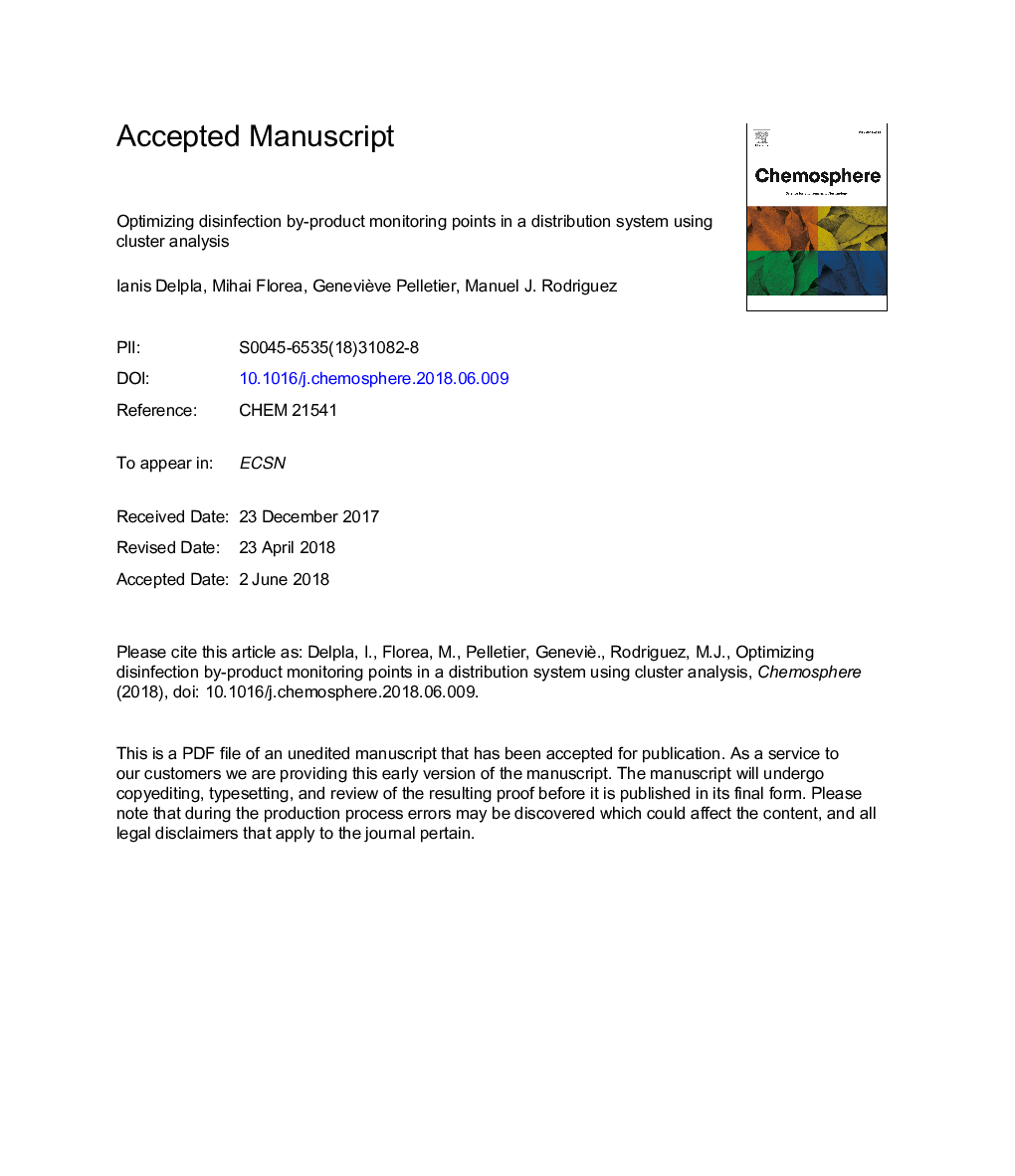| Article ID | Journal | Published Year | Pages | File Type |
|---|---|---|---|---|
| 8850742 | Chemosphere | 2018 | 35 Pages |
Abstract
Trihalomethanes (THMs) and Haloacetic Acids (HAAs) are the main groups detected in drinking water and are consequently strictly regulated. However, the increasing quantity of data for disinfection byproducts (DBPs) produced from research projects and regulatory programs remains largely unexploited, despite a great potential for its use in optimizing drinking water quality monitoring to meet specific objectives. In this work, we developed a procedure to optimize locations and periods for DBPs monitoring based on a set of monitoring scenarios using the cluster analysis technique. The optimization procedure used a robust set of spatio-temporal monitoring results on DBPs (THMs and HAAs) generated from intensive sampling campaigns conducted in a residential sector of a water distribution system. Results shows that cluster analysis allows for the classification of water quality in different groups of THMs and HAAs according to their similarities, and the identification of locations presenting water quality concerns. By using cluster analysis with different monitoring objectives, this work provides a set of monitoring solutions and a comparison between various monitoring scenarios for decision-making purposes. Finally, it was demonstrated that the data from intensive monitoring of free chlorine residual and water temperature as DBP proxy parameters, when processed using cluster analysis, could also help identify the optimal sampling points and periods for regulatory THMs and HAAs monitoring.
Related Topics
Life Sciences
Environmental Science
Environmental Chemistry
Authors
Ianis Delpla, Mihai Florea, Geneviève Pelletier, Manuel J. Rodriguez,
